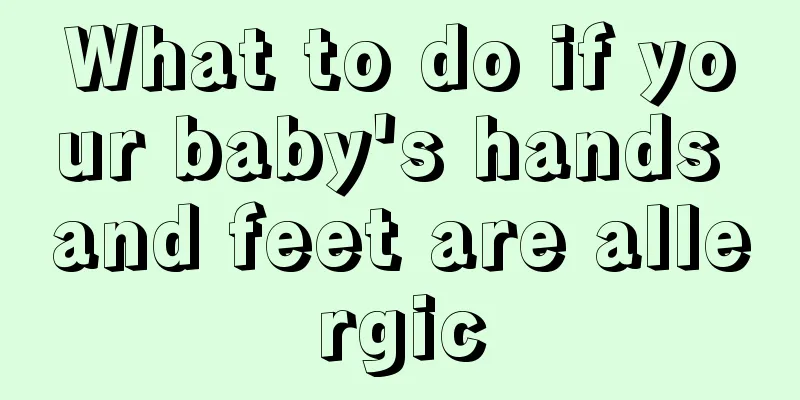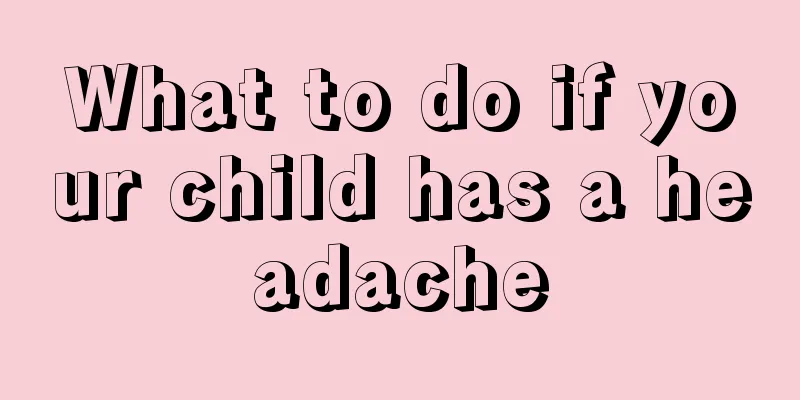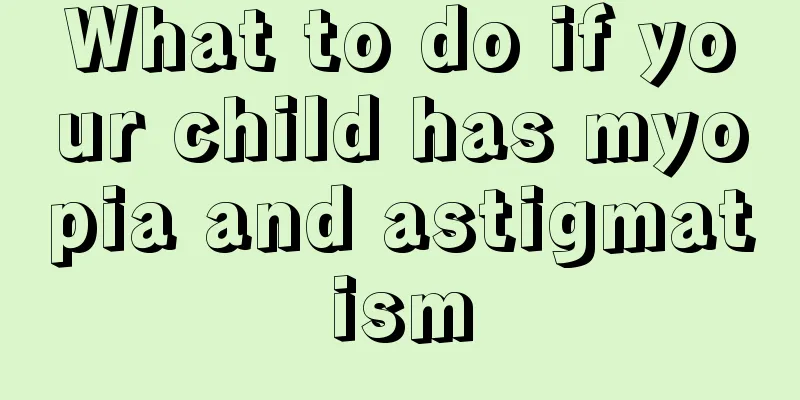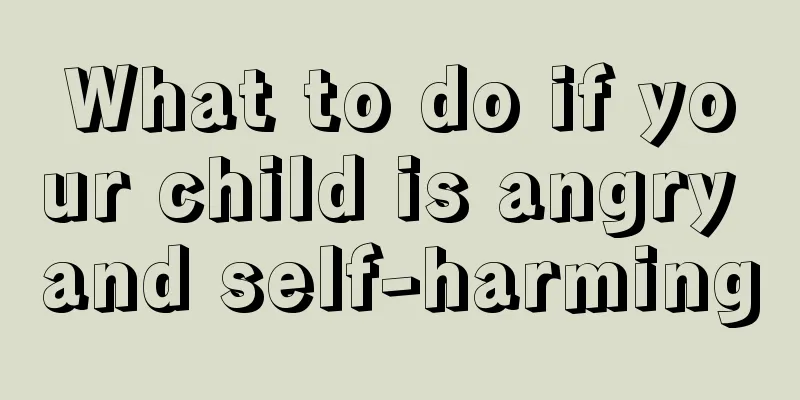Baby's eyelashes stick to the eyeball

|
The baby's whole body is very delicate, and even a minor illness that may be serious for an adult may cause harm to the baby. Therefore, the baby’s parents need to pay attention to the baby’s body at all times, observe where the baby is uncomfortable, and whether the baby’s crying is normal. Eyes are very fragile organs, especially those of babies. Babies' eyes may sometimes become infected due to rubbing themselves, so be very careful. 53 The baby's eyelashes are stuck to the eyeballs, which requires attention. The main reason for eyelash enlargement is that the baby's facial features are different from those of adults. The baby's cheeks and nose root are not yet fully developed, and the skin appears loose, especially the inner side of the lower eyelid. This causes the baby's eyelids to turn inward, pulling the eyelashes inward, resulting in ingrown eyelashes. Generally, inverted eyelashes in children are harmless. As the baby grows older, the face becomes longer, and the nasal bones develop, most inverted eyelashes can be restored to their normal position. In mild cases, antibiotic eye drops or eye ointments (such as chloramphenicol eye ointment, chloramphenicol eye drops, etc.) can be applied. At the same time, you can also pull the child's lower eyelid down frequently to reduce the irritation of the cornea caused by inverted eyelashes. If the eyelashes are thick and short, they will poke the eyes and injure the cornea, causing the baby to be afraid of the light and tear up obviously. At this time, surgical correction is often required. It is recommended to go to the hospital for an eye examination. Normal eyelashes grow on the front lip of the eyelid margin. They develop from the surface ectoderm epithelium and are arranged in 2 to 3 rows. They are short, curved and coarse hairs. Eyelashes have the function of shielding light, blocking dust, preventing foreign objects from entering the eyes and beautifying the eyes. Long, black, and upturned eyelashes play an important role in modifying a person's appearance. There are more eyelashes on the upper eyelid, with 100 to 150 roots, and an average length of 8 to 12 mm. The angle of the upper eyelashes when the eyes are open and looking straight ahead is 110° to 130°, and 140° to 160° when the eyes are closed. There are 50 to 80 eyelashes on the lower eyelid, with an average length of about 6 to 8 mm. The angle of the lower eyelashes when the eyes are open and looking straight ahead is 100° to 120°. The roots of eyelashes are deep in the connective tissue and muscles, where there are abnormal sweat glands and sebaceous glands, whose ducts open into the eyelash follicles. There are many small holes arranged in a row on the posterior lip of the eyelid margin. These holes are the openings of the meibomian gland ducts. The meibomian glands themselves are located in the tarsal plate. Abnormal eyelash tilt angle can be caused by changes in the eyelash growth angle or eyelid diseases. There are many reasons for inverted eyelashes. In children and adolescents, it is mainly caused by abnormal growth direction of eyelashes, excess skin on the lower eyelid, sometimes excess skin on the lower eyelid combined with epicanthus, and congenital entropion. In middle-aged and elderly people, entropion is mainly caused by inflammation of the eyelid conjunctiva and scar contraction of the eyelid margin, as well as various other reasons. There are two main causes of trichiasis, including trichiasis without entropion and trichiasis with entropion. Entropion can definitely cause inverted eyelashes, but inverted eyelashes are not necessarily accompanied by entropion. Inverted eyelashes can exist alone. Entropion refers to an abnormal condition in which the eyelid margin rolls inward toward the eyeball. 1. Trichiasis without entropion: It is simply due to the abnormal growth direction of eyelashes or the pressure of the skin of the lower eyelid, causing the eyelashes to sweep towards the cornea. 2. Eyelid entropion with trichiasis ⑴ Congenital entropion It is more common in infants and young children and only occurs on the lower eyelid. The incidence rate is higher in Asians and it is prone to occur near the inner part of the lower eyelid. Pathogenesis: Most of them are caused by traction of the epicanthus, overdevelopment of the orbicularis oculi muscle of the eyelid or incomplete development of the tarsal plate. Some infants and young children are relatively fat, and the root of the nose is not fully developed, and the root of the nose is very flat. In addition, there are epicanthus and hypochondrium, which can also cause entropion of the lower eyelid. Congenital entropion should be distinguished from epiblepharon. The former is a curling of the eyelid margin itself, while the latter is a rare congenital abnormality with an extra skin fold on the inner side of the lower eyelid. This fold can pull the eyelashes on the inner side of the lower eyelid inward and bring them into contact with the cornea and conjunctiva, but the eyelid margin itself does not turn inward. (2) Degenerative entropion Degenerative entropion, also known as chronic spasmodic entropion or senile entropion, mostly occurs in the lower eyelid. Pathogenesis: a. Rupture of the lower eyelid retractor aponeurosis, resulting in weakness of the lower eyelid retractor muscle; b. Relaxation of the horizontal tension of the eyelid, relaxation of the orbital septum and lower eyelid skin, and loss of the function of restraining the contraction of the orbicularis oculi muscle, causing the lower edge of the tarsal plate to lean outward and the eyelid edge to lean inward; c. Mild enophthalmos, due to the reduction of orbital fat in the elderly and lack of sufficient support behind the eyelid; d. Overlap of the orbicularis oculi muscle, orbicularis oculi muscle spasm, upward curling of muscle fibers, and overlapping of the orbicularis oculi muscle in front of the orbital septum, resulting in entropion of the eyelid and trichiasis. (3) Scarring entropion Scarry entropion is caused by the contraction and traction of the conjunctiva and tarsal scar, which causes the eyelid to fall toward the eyeball. Both the upper and lower eyelids can be affected. It can mainly be caused by diseases such as trachoma scars, conjunctival burns, chemical injuries, conjunctival pemphigus and diphtheria conjunctivitis. Pathogenesis: The contraction of the scar causes the posterior layer of the eyelid to be significantly shorter than the anterior layer, causing the eyelid margin to curl inward, resulting in scar entropion. (4) Spasmodic entropion It is more common in the lower eyelid and is caused by spasm of the orbicularis oculi muscle. Pathogenesis: It is common in acute eye inflammation, injury or intraocular surgery (such as cataract removal), because the stimulation causes reflex spasm of the orbicularis oculi muscle, especially the orbicularis oculi muscle fibers near the eyelid margin, resulting in inward rolling of the eyelid margin and formation of entropion. Because the tarsal plate of the lower eyelid is thin and narrow, spasm is more likely to occur, while the tarsal plate of the upper eyelid is wider and inversion is less likely to occur. This type of inversion is mostly temporary and will disappear on its own once the irritating factor disappears. |
<<: Why does my baby always sweat?
>>: What to do if baby eyelashes fall into eyes
Recommend
Why does my baby's legs suddenly shake when he falls asleep?
Babies sleep for a long time and are easily awake...
Newborns frequently feed at night
Newborns will also feed several times at night, b...
What should I do if my child has a fever every afternoon?
Children's resistance and immunity are relati...
What are the benefits of a baby swimming bath?
Children need to be bathed and swim as soon as th...
Why are baby's cheeks red?
The redness of the baby's cheeks is mainly ca...
What medicine should children take for intestinal spasms
Childhood intestinal spasms are a disease that is...
Why do newborns sleep with their eyes half open?
Babies are the angels of every family. Careful mo...
Newborn rash with white tips
In real life, the rash on the newborn's body ...
Why does my baby keep drooling?
Children's health is something that every fam...
The child complains of chest tightness?
If a child experiences chest tightness, parents m...
What should I do if my child has conjunctivitis?
Conjunctivitis is a common eye disease in real li...
Two-year-old baby always falls when walking
As babies grow up, they will continue to learn an...
What to do if your newborn baby has jaundice
Jaundice is a common disease among newborns. The ...
Child Psychological Counseling and Treatment
Recently, many children have developed autism. Th...
What to do if your child's fingers peel
Parents will be very worried about all kinds of s...









